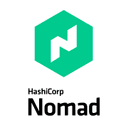Starting at $5,000 per year
View Pricing Overview
What is Ansible?
The Red Hat Ansible Automation Platform (acquired by Red Hat in 2015) is a foundation for building and operating automation across an organization. The platform includes tools needed to implement enterprise-wide automation, and can automate resource provisioning, and IT environments…
Recent Reviews
Awards
Products that are considered exceptional by their customers based on a variety of criteria win TrustRadius awards. Learn more about the types of TrustRadius awards to make the best purchase decision. More about TrustRadius Awards
Popular Features
- Parallel Execution (40)8.989%
- Infrastructure Automation (44)8.888%
- Automated Provisioning (41)8.585%
- Reporting & Logging (41)7.575%
Reviewer Pros & Cons
Video Reviews
3 videos
Is it worth it? | Red Hat Ansible Automation Platform Review
04:14
Red Hat Ansible Automation Platform Review | Words from an Automation Architect
03:12
Red Hat Ansible Automation Platform Review | Systems Admin Thoughts
06:37
Pricing
Basic Tower
5,000
On Premise
per year
Enterprise Tower
10,000
On Premise
per year
Premium Tower
14,000
On Premise
per year
Entry-level set up fee?
- No setup fee
Offerings
- Free Trial
- Free/Freemium Version
- Premium Consulting/Integration Services
Product Demos
WebLogic Continuous Deployment with Red Hat Ansible Automation Platform
YouTube
Trusted Automation Series: F5 BigIP
YouTube
Manage your Cisco devices with Red Hat Ansible Automation Platform
YouTube
Network Automation Basics - First Ansible Playbook
YouTube
Deep Dive - Automated NetOps - Ansible for Network GitOps
YouTube
Features
Return to navigation
Product Details
- About
- Tech Details
- FAQs
What is Ansible?
The Red Hat Ansible Automation Platform (acquired by Red Hat in 2015) is a foundation for building and operating automation across an organization. The platform includes tools needed to implement enterprise-wide automation, and can automate resource provisioning, and IT environments and configuration of systems and devices. It can be used in a CI/CD process to provision the target environment and to then deploy the application on it.
Its Automation Hub provides a one-stop-shop for Ansible content that is backed by support from Red Hat and its partners to deliver additional reassurance for demanding environments.
The Ansible project and Ansible Engine are open source technologies. The Ansible project is built by the community (ansible.com/community) for the benefit of the community. Ansible Engine is developed by Red Hat with the explicit intent of being used as an enterprise IT platform.
Its Automation Hub provides a one-stop-shop for Ansible content that is backed by support from Red Hat and its partners to deliver additional reassurance for demanding environments.
The Ansible project and Ansible Engine are open source technologies. The Ansible project is built by the community (ansible.com/community) for the benefit of the community. Ansible Engine is developed by Red Hat with the explicit intent of being used as an enterprise IT platform.
Ansible Technical Details
| Deployment Types | On-premise |
|---|---|
| Operating Systems | Linux |
| Mobile Application | No |
Frequently Asked Questions
The Red Hat Ansible Automation Platform (acquired by Red Hat in 2015) is a foundation for building and operating automation across an organization. The platform includes tools needed to implement enterprise-wide automation, and can automate resource provisioning, and IT environments and configuration of systems and devices. It can be used in a CI/CD process to provision the target environment and to then deploy the application on it.
Reviewers rate Parallel Execution highest, with a score of 8.9.
The most common users of Ansible are from Mid-sized Companies (51-1,000 employees).







